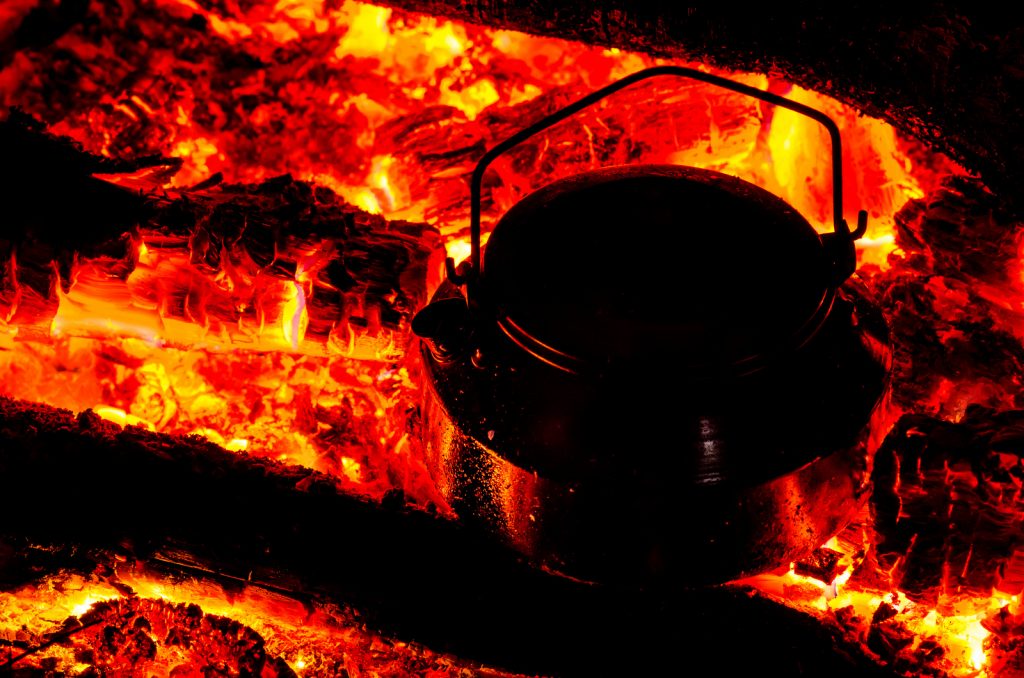A Uniquely American Treat – Indian Pudding Posted by Gary Locke on Oct 6, 2016 in Culture

The most distinctly American recipe may well be for Indian Pudding.
I have a group of friends that I share meals with four times a year. The eight of us, four couples, gather at the home of one couple and enjoy laughs, catch up on what’s happening in each other’s lives, and indulge in lengthy meals accompanied by wine. We call ourselves The Brunch Bunch, and we have been doing this for decades.
Recently, I asked everyone in our group to think of one recipe that was singularly American. What dish could grace the table that you wouldn’t find coming out of any other culture? Apple pie was suggested but, really, couldn’t many countries claim their own version of apple pie? The French have Tarte Tatin, the Dutch have Appeltaerten, and the Germans have Apfelkuchen – and I’m sure that there are more! Finally, my friend Terry suggested that the most distinctly American recipe was probably Indian pudding, and I had to agree.
To be clear, Indian pudding is not really a Native American recipe. When settlers from England came to the new world and began to form the American colonies, they looked for ways to recreate their favorite recipes from back home in Britain. One of their most common comfort foods was porridge called hasty pudding, made from stirring sweetened boiling milk with wheat flour. Wheat flour wasn’t widely available to the colonists, but cornmeal (which they called Indian flour) was. Cornmeal is much coarser than properly milled wheat flour, so it doesn’t produce a smooth, silky texture. Additionally, instead of sugar, the most widely available sweetener for the colonists was molasses, which they produced in vast quantities to make rum. To soften the heaviness of the molasses, the colonists added spices like cinnamon and nutmeg to the mixture.
Finally, unlike its British predecessor, the colonists took advantage of the kitchen hearth to bake this for a long time at a low temperature. The hearth would heat the home throughout the day and well into the night. By placing the mixture into a pot and then slowly cooking it, the pudding took on a texture completely unlike the pottage the colonists were initially seeking to recreate.
In 1795, at Harvard University, a society was formed specifically around the appreciation of this pudding. They met to encourage “friendship and patriotism”, and to eat the American Hasty Pudding, which they deemed far superior to the gruel being served by the college. Today, The Hasty Pudding Club of Harvard University is America’s oldest theatrical organization. They hold an annual celebration honoring actors with the Hasty Pudding Man and Woman of the Year. Following parades and a performance (largely in drag), the honoree is presented with a tiny replica pot, symbolizing the historic cast iron pot that the pudding was cooked in.
Here’s my recipe for Indian pudding, which serves 8.
Ingredients:
4 tbsp. unsalted butter, plus more for ramekins
5 1⁄2 cups milk
1 thumb-sized piece of ginger, peeled and finely chopped
1 vanilla bean, split lengthwise, seeds scraped and reserved
3⁄4 cup packed dark brown sugar
2⁄3 cup yellow cornmeal
1 tbsp. light molasses
1 tbsp. maple syrup
½ tsp. ground Allspice
1 stick cinnamon, halved
Vanilla ice cream, for serving
Instructions:
Preheat oven to 300 degrees F. Bring milk, ginger, and vanilla bean with seeds to a boil, then strain the milk, discarding the vanilla bean and ginger. Return milk to the saucepan, and add cornmeal, brown sugar, Allspice, molasses, maple syrup, and cinnamon stick. Over a medium heat, stir the mixture for about 15 minutes until it returns to a boil and slowly thickens. Whisk in butter, and then remove from heat.
Lightly butter 8 4-oz. ramekins. Pour mixture into the ramekins, dividing evenly. Place the ramekins on a baking sheet, and bake in the oven until mixture almost sets, but jiggles slightly when moved, about 75 minutes. Let ramekins cool for 10/15 minutes, then serve with a small scoop of ice cream on top.
Enjoy!
Photo by Håkon Johansen from Flickr Johansen

Build vocabulary, practice pronunciation, and more with Transparent Language Online. Available anytime, anywhere, on any device.



